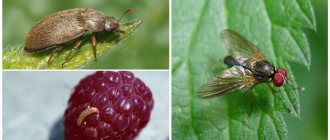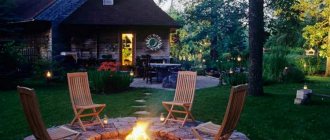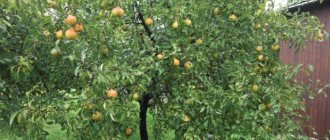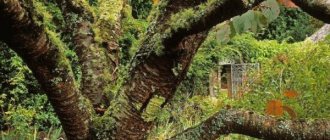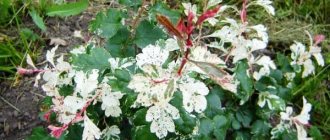You can hunt a hare without a gun. This is exactly how our ancestors hunted long-eared animals, when only the nobility had firearms. Every hunter had an ax and a knife, and it was with their help that catchable live traps for hare could be made. The main condition for a successful hunt was and remains location - hares do not run everywhere, so first you need to find their paths. There are very few hares in pine and spruce forests, since young aspen are not often found there, and in winter it is the main food for rodents.
There is a high probability of finding trails in small forests, where there is a lot of small young aspen. In such places a herd of hares can live, sometimes reaching from 5-6 to several hundred pieces. Under no circumstances should you step on the paths - only step over them, otherwise the hare will abandon them. Traps should be installed in such places.
How to put loops on a hare
The hare knocks down the guard with its muzzle and belly, the noose is released and picks it up by the paws. In such a loop, the animal remains alive for more than a day, so the hunter does not remove a cold carcass. Snow is thrown on top of the trap for camouflage (photo No. 13, No. 13.1).
| Photo No. 13 | Photo No. 13.1 |
If it begins to snow, the live trap will still remain in working condition. Coniferous wood interrupts the smell of a person and the hare loses its vigilance, feeling its safety.
Choosing a suitable location
Young hunters often wonder how to put nooses on a hare and where is the best place to do it? The main place for attaching this equipment is on hare trails. In the winter season, they are quite easy to spot near the hare’s feeding areas:
- Brown hare - parallel to farmland, fields, vegetable gardens, meadows and meadows, under stacks and stacks of straw, and also closer to mid-winter in gardens.
- The white hare is found closer to ravines and floodplains overgrown with young willow trees, in young aspen and birch forests, in the garden and on a summer cottage.
A hare trail can be called a piece of ground in the snow on which there are at least three hare tracks or there are clearly visible tracks of at least two hares. But you need to look more carefully so that it does not turn out to be a hare two or three. The easiest way to find a hare is where the snare is difficult to see and the path is limited on the sides.
Some hunters are wondering how to put nooses on a hare in the summer? To do this, you need to choose the right place. The installation location is most often chosen in bushes or near trees, preferably between them - this way it is more convenient to tie the trap and it will be less noticeable. Place the loop above the path, at a height of 10–15 cm from ground level, so that the hare runs head first into it.
How to make a hare trap
This type of trap does not require any additional devices such as ropes, cables, or loops. This is an option for hunters surviving in the forest. The trap is made exclusively with an ax and a knife, although it is bloody. Once in it, the hare is very injured and bleeds. Rozhny are not known for their catchability, but in the absence of any other option for survival, they completely provide a person with prey until better times. Set the trap only if the snow layer is at least half a meter deep. There must also be a thin crust, as it is used as a lid. Rozhna cannot be installed next to loop-type traps. If the loops lift the hare up, protecting it from predators, then the smell of the blood of the rattles, on the contrary, will attract foxes or even wolves. Predators will scare away the hares, causing the hares to move away from these paths.
Because of one caught animal you can lose an entire enclave of hares
That is why hunters do not like gouges, but use them only when necessary.
How to catch a hare in the forest
The most common forest game
Most forest areas in Russia are home to a huge number of edible animals and birds. But a separate place is occupied by the ordinary hare. This small animal is found almost everywhere in large quantities and is a frequent prey for most hunters. But, in the absence of firearms, getting a hare is quite difficult. This article will talk about the most common methods of catching a hare.
Preparatory stage
It must be remembered that the hare has not only acute hearing, but also a developed sense of smell. Therefore, after setting up a trap, it is necessary to eliminate human odor as much as possible. Any herbs that have a strong scent or needles are suitable for this. Wormwood works well; you can boil a large bunch of this herb in a pot and pour the broth well over the ground near the trap; a similar operation can be carried out with young coniferous shoots.
Silky
One of the most ancient and successful ways of catching hares is to set snares on hare trails. In order to discover these trails, it is necessary to observe for several days the area of the forest where the long-eared animals were spotted. After this, it is necessary to detect the chains of their traces and set snares along this line. There are several materials from which snares can be made, these include:
Read: Topographical signs
Regular fishing line. This is a very durable material, almost invisible from the outside. It is enough to wipe it with the juice of an aromatic plant to fight off the smell. Thin steel wire. It’s a little more complicated here, the wire is much stronger than the fishing line, but it’s easier for the animal to notice. In addition, metal has its own characteristic odor, which is difficult to get rid of. You need to boil the wire in a pot with pine needles and mask the snare with climbing plants.
Thin, strong rope, bought in a store or made with your own hands from nettles. Such materials do not cause fear in the hare, even if he notices them. It is enough to soak the rope in any herbal solution and make a snare from it.
There is nothing complicated about making the snare itself. A loose loop is made from a suitable material, which is attached above the hare's path and, if possible, stretched slightly to the sides. The distance from the loop to the ground should be no more than 10 cm so that the animal can get its head into it. The optimal diameter of the loop is about 20 cm. The snares are placed along the path at a distance of 2-5 m. The optimal number of snares is 5 pieces. If these conditions are met, there is a high probability that the hare will fall into the trap and provide the tourist with a supply of tasty meat.
Read: A clubfooted bear is walking through the forest, and tourists meet him... What to do?
Trap pits
This is a rather labor-intensive and complex method, but no less effective. Before digging a hole, you need to spread a piece of fabric or oilcloth nearby. You need to pour soil on it and throw it away. A fresh earthen hill near the path will alert the cautious animal and it will change route. The perimeter of the pit itself must be at least 1 square meter, and the depth is about 1.5 m.
When going deeper into the ground, it is necessary to expand the walls of the pit so that it is shaped like a truncated pyramid. This design will not allow the hare to get out and will securely hold it until the tourist arrives. You should not stick sharp pegs into the bottom of the hole; there is a small chance that instead of a hare, another creature, for example, a person, will fall into the hole.
The hole must be covered with thin branches and densely covered with dry leaves and a small amount of soil, imitating the surrounding landscape. After this, the pit itself and the ground around it must be treated with a decoction of pine needles or wormwood, fighting off the human smell. By taking all these precautions, you can catch a hare whose meat will last for several days.
Subscribe to
our channel in Yandex Zen
Making winter furrows
Rozhny are made very simply. It is necessary to break off a part from the deck, approximately the length of a hare: that is, about 40 cm and a width of 15-18 cm (photo No. 1)
Photo No. 1
If the size is larger, it’s not a big deal, since there are no strict restrictions on the pricks. Small splits are made in the block of wood in different places (photo No. 2, No. 2.1).
| Photo No. 2 | Photo No. 2.1 |
They are made according to the number of pre-planed and necessarily dried pegs (photo No. 3).
Photo No. 3
Pegs are cut from black alder, birch, and other species. 7-9 pieces will be enough. After drying, the pegs become very sharp and strong, reminiscent of wooden nails.
You can dry the sticks near the fire in one night
Insert pegs into the filled holes on the log (photo No. 3, No. 3.1, No. 3.2., No. 3.3).
| Photo No. 3 | Photo No. 3.1 |
| Photo No. 3.2 | Photo No. 3.3. |
Wherever the hare falls, it will be hit by 2-3 sharp pegs. Ready-made horns can be installed (photo No. 4, ;4.2).
| Photo No. 4 | Photo No. 4.1 |
Choosing a place and setting the rod on a hare
To set the trap, the hunter goes further into the forest, to places where nooses and other hare traps have not been placed. A hare trail is found there, under which the trap will be set (photo No. 1).
Photo No. 1
It is not necessary, or even rather not recommended, to place just 1 trap; on the contrary, it is possible to place up to 10-15 of them on a large area of hare trails. To properly install the gouges, you need a tubercle and a path along which the hare has walked several times (photo No. 2).
Photo No. 2
They approach the required place carefully so as not to block the path. It is necessary to dig under the path as deeply and very carefully as possible, right to the ground. They begin digging no closer than half a meter from the path itself (photo No. 3).
Photo No. 3
All the snow is removed, but a snow crust is always left on top. The ceiling is undermined very carefully, leaving it 3-5 cm thick. It will preserve the path, the hare, and in appearance, nothing will threaten the hare. When the hare enters this place, he will simply fall through the cracks. They set a trap along the path (photo No. 4).
Photo No. 4
It is advisable to cover the excavation hole with twigs (photo No. 5).
Photo No. 5
The presence of the catch should be checked daily, maximum every other day.
How to correctly identify a hare's footprint
Some amateur hunters are wondering: how to put a noose on a hare? To do this, it is important to know how to install this device and what this animal is.
The hare is a very smart and cunning mammal. Thanks to his intelligence, he is good at confusing his tracks. Therefore, when we put loops on a hare in winter, we pay attention to the direction of the tracks. The animal can run along the path and jump from side to side. Because of this, his traces become double. And if an animal runs in circles or in loops, then the direction of its tracks will be difficult to predict. Only the most experienced hunter can do this.
Brown and hare hares have different tracks in winter. If the first one has them more oval and long, then the other one has them round and with a short step. And their parallelism in a sitting position is the main distinguishing feature compared to other animals. The tracks of other mammals may be slightly clubbed. Every hunter is obliged to correctly determine the time of the hare's tracks. For example, if snow is falling and at this time the trail is clearly visible, then it is probably fresh. And when the weather is without any precipitation, it is necessary to examine the trail more carefully. This can be determined as follows: if the edge of the track is smoothed by the wind, then it is old.
Fresh trails are ideal for installing loops. Therefore, it is better to do it in such places.
Track a hare by tracking
Another way to take a hare without a hunting dog is to hunt by tracking. This type of hunting comes down to finding a fresh trail, then all that remains is to follow it to the resting place and pick it up. More or less open areas of land and good endurance are needed. However, another important condition for a successful hunt is the ability to understand all the subtleties and intricacies of hare tracks. The number of animals may not be high, but hares run a lot during the night, and therefore it is not difficult to find the trail.
You only need to track the morning trail, or at least the night trail, when the hare has left its bed to feed. In order to distinguish such traces, you need a little skill. And to track down “your” trace from hundreds of others left earlier requires experience. Therefore, most often they go hunting after light powder, optimally when the snow stops falling at 3-4 in the morning. All traces are fresh and clearly visible.
Traces of a hare can most often be found on the edge of winter crops, along village houses in vegetable gardens, in fruit tree gardens, along roads along fields. Once you have found a trail, the interesting and exciting process of walking along it begins. The hare always, and especially before the morning, heading to his day’s place, resorts to all sorts of tricks to confuse the trail. He makes “doubles”, goes to a certain place and returns in his own wake, after which he makes sharp and long leaps to the side. Can make a ring when the trail leads to its own trail.
The figure shows: 1 – double stitch, 2 – basting, 3 – loop, 4 – lying down.
As practice shows, a hare usually confuses its tracks twice. The first time a large and intricate labyrinth is created, then he moves away from this place and confuses the tracks again. It is after the second labyrinth that he usually goes to bed, lying next to him. To have time to leave while you are unraveling the tracks. If the labyrinth is very confusing, make a circle with a diameter of 500 meters, and you should come across an exiting trail, but if there is none, then carefully begin to comb the places where the hare can lie.
SHARE
Hinge installation location
The most important thing is to determine the correct location for installing the loop. Hunters attach special importance to this issue, since the result of the hunt depends on the right place.
However, some hunters have a completely different opinion. And they do not at all believe that it is thanks to a well-chosen place that good fishing results can be achieved. But they all follow one main rule - under no circumstances should you cross a hare’s path in the immediate vicinity of the place where the loop is installed:
- If you cross the path, there will be footprints on it. And a hare running past will be able to detect them and will not fall into the snare.
- In addition, not only should you not cross the path, but you should also not come close to the hare paths themselves. Hares have a very well developed sense of smell and are very vigilant. And if they also find tracks near the trail, then the chance of catching a mammal in this case is not at all great.
There are supporters of the idea that it is possible to follow the tracks of a hare. The most important thing is to get to the trap itself and under no circumstances turn off the path. The hare will become interested in the tracks and follow the hunter.
As for the characteristics of the hare’s behavior, it should be noted that he is afraid exclusively of human tracks, but, on the contrary, he is not afraid of ski tracks. Therefore, as an option, you can use the second method.
Ultrasound device
This repeller is an effective means of getting rid of uninvited guests. I would like to tell you a little about how to get rid of hares using this device. Its positive side is that it allows you to do without chemicals and other dangerous substances.
As usual, the complete set also includes a special stand, so installation in the garden will not take much effort. The configuration may vary, depending on it, the sensor responds at a distance of 10 - 12 meters. The device operates with ultrasound, the frequencies of which are in the range of 18,000 – 24,000 Hz.
The hare senses the signal and does not approach the protected territory. There are modifications with a motion sensor that can detect the slightest vibrations. Thus, the appearance of an animal causes a sharp sound or light signal that frightens the animal.
Fencing trees
Sometimes gardeners resort to fencing garden trees, not being able to build a high fence on their territory. Today you can find a variety of metal and plastic nets on sale, with which you can easily protect fruit trees and shrubs from pests.
Special plastic tubes that are placed on the trunk of a young tree with a non-grown crown are also in demand. Both store-bought designs and homemade products are suitable.
The garden can be fenced with a chain-link mesh; this material is dug into the ground at least 20 - 30 cm, so that animals cannot get to their favorite trees. The structural mesh must have a length of 1 meter. Gardeners often create such protection for each individual tree.
How to track a hare?
You need to walk slowly, always looking at the environment, make transitions from one promising place to another, always walk ready to shoot, a hare will appear at any moment, and usually at the most inopportune time (nose itches, talking to someone). As a rule, the hare will either be far away or fly out right from under your feet, and then you have to shoot at it almost instantly. Actually, the constant expectation of the appearance of prey and many emergency situations always keep this hunt in constant tension.


